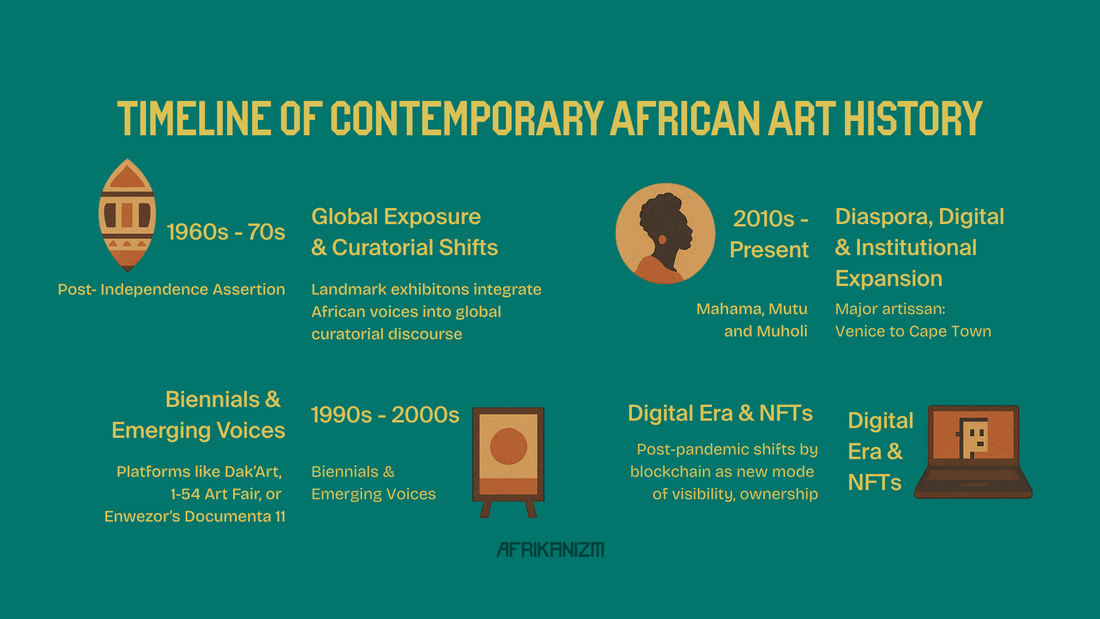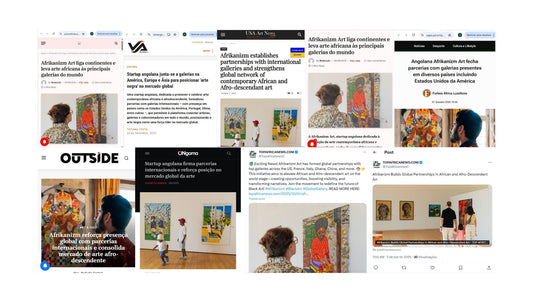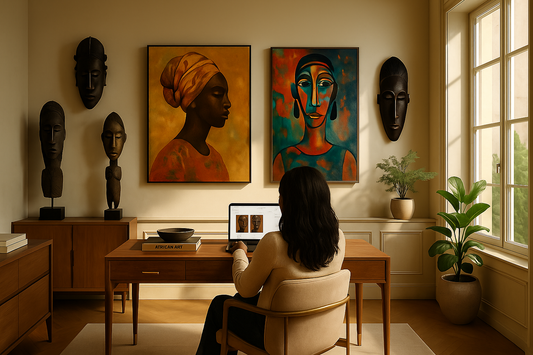AFRIKANIZM ART NEWS

From Independence to Influence: The Evolution of Contemporary African Art
A Journey from Post-Colonial Assertion to Global Creative Power—on Africa’s Terms
Contemporary African art is no longer confined to the margins of the global art world. Once filtered through colonialist lenses or reduced to ethnographic curiosity, today it occupies a central and commanding role on the international stage—featured in biennials, collected by major institutions, and celebrated by critics and curators worldwide.
Yet, this recognition did not appear overnight. It is the result of decades of creative resistance, institutional groundwork, and relentless innovation by artists both on the continent and in the diaspora. From the era of independence movements in the 1960s to today’s digital-native art collectives and NFT breakthroughs, the trajectory of African contemporary art tells a powerful story—one of reclamation, transformation, and cultural self-determination.
This article traces that evolution. It outlines the key moments, movements, and voices that have shaped African contemporary art into one of the most vibrant and influential forces in global culture today. Understanding this journey is essential—not only to contextualise today’s success stories, but also to recognise the complex histories and futures that African artists continue to navigate.
1960s–70s: Post-Independence Assertion
Following independence movements, African artists seized the canvas to reclaim cultural identity. The École de Dakar in Senegal (1960–74), influenced by Négritude under President Léopold Sédar Senghor, combined modernism with African aesthetics. Meanwhile, artists like Yusuf Grillo (Nigeria), Skunder Boghossian (Ethiopia), and Ernest Mancoba (South Africa) embraced abstraction as a form of cultural resistance, forging new aesthetic vocabularies beyond the colonial gaze.
1980s–90s: Global Exposure & Curatorial Shifts
The late 20th century saw a shift in how African art was exhibited and discussed. Landmark exhibitions such as Magiciens de la Terre (Centre Pompidou, 1989) and Primitivism in 20th-Century Art at MoMA began including African artists in international contexts, though often under problematic framings. African publications like Revue Noire and Africus Journal challenged these perspectives, centring African voices and artistic agency.
Curatorial Revolutions: Enwezor & Documenta 11
A key turning point came with Nigerian curator Okwui Enwezor, who made history directing Documenta 11 in 2002—the first truly postcolonial edition of the seminal German art show. His Short Century exhibition (2001) tracked Africa’s liberation movements through art, while Snap Judgments (2006) spotlighted contemporary African photography. Enwezor redefined global curatorial practice and expanded the space for African artistic discourse on its own terms.
1990s–2000s: Biennials & Emerging Voices
The inaugural Dak’Art Biennale in 1996 became a crucial platform dedicated exclusively to contemporary African art. Soon after, the launch of 1-54 Contemporary African Art Fair (2013, London) extended visibility to markets in New York and Marrakech, allowing emerging artists to connect directly with international collectors, institutions, and press.
2010s–Present: Diaspora, Digital & Institutional Expansion
Diaspora artists—like Wangechi Mutu (Kenya/USA), Zanele Muholi (South Africa), and Ibrahim Mahama (Ghana)—now headline exhibitions from Venice to Venice Beach. Their work explores identity, decolonisation, environment, and gender with global resonance.
At the same time, Africa witnessed the emergence of leading art institutions: Zeitz MOCAA (Cape Town, 2017), MACAAL (Marrakech, 2018), Centre for Contemporary Art Lagos (CCA), and the Norval Foundation have strengthened curatorial research and education across the continent.
Digital Era & NFTs
Post-pandemic, African artists turned increasingly to digital formats. Nigeria’s Osinachi became the first African crypto-artist to sell an NFT at Christie’s Europe, while projects like AfroDroids generated new models for visibility, ownership, and economic sustainability. Platforms such as Artsy, Artx, and social media have also fuelled direct engagement between African artists and global audiences.
What Lies Ahead
-
Decolonising narratives: Exhibitions now centre African curators and artists shaping their own stories—such as When We See Us (Zeitz MOCAA) or African Artists: From 1882 to Now (Phaidon).
-
New cultural infrastructure: Residencies like Africa’s Out! (Wangechi Mutu) and RAW Material Company (Senegal) invest in the next generation of African thinkers and artists.
-
Market vs infrastructure: The international market continues to grow, but challenges remain—limited public funding, few art schools, and the need for stronger regional collector bases.
What began as a bold reclamation of post-independence identity has matured into a multifaceted and globally influential movement. Contemporary African art today is not a trend—it is a vibrant, layered, and enduring contribution to world culture. But to secure its future, the focus must now turn to building long-term ecosystems: education, funding, and sustainable platforms rooted in Africa itself.
Only then will the art of the continent not just be seen—but fully heard.







No comments